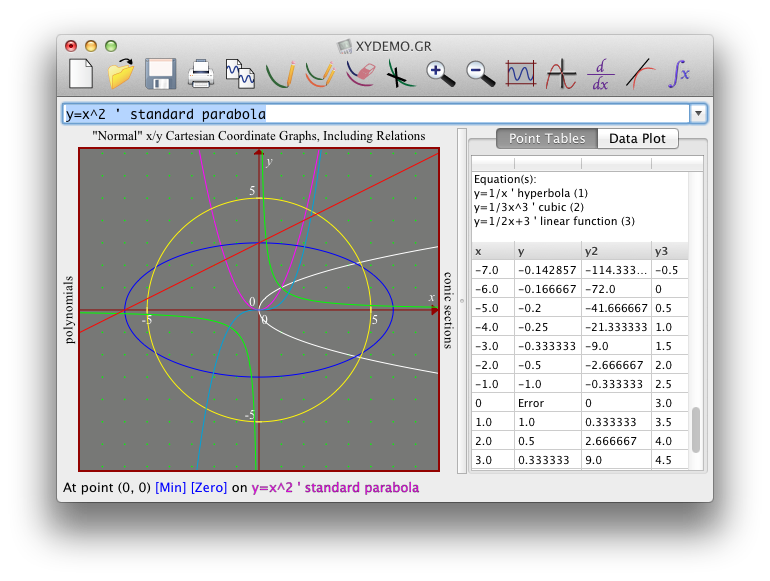
to define the multivalued version of each inverse trigonometric function: e.g. The notations sin −1( x), cos −1( x), tan −1( x), etc., as introduced by John Herschel in 1813, are often used as well in English-language sources, much more than the also established sin ( x), cos ( x), tan ( x),-conventions consistent with the notation of an inverse function, that is useful e.g. In computer programming languages, the inverse trigonometric functions are often called by the abbreviated forms asin, acos, atan. Thus in the unit circle, "the arc whose cosine is x" is the same as "the angle whose cosine is x", because the length of the arc of the circle in radii is the same as the measurement of the angle in radians. Para ello se da clic en el botn (cursor de coordenadas) o digita Ctrl + C (fig. Con Graphmatica se pueden calcular las coordenadas de los de interseccin de la grfica con el eje x. Se ha cambiado el rango de la cuadricula. When measuring in radians, an angle of θ radians will correspond to an arc whose length is rθ, where r is the radius of the circle. 11 se muestra el resultado de elaborar la grfica polinominal propuesta en la tabla 1. (This convention is used throughout this article.) This notation arises from the following geometric relationships: Si ysenx, entonces la inversa se denota de las siguiente. Suele denominarse arco a una cantidad que se expresa en forma de radianes, por esta razn las funciones inversas llevan el prefijo, arco. Si tenemos, arcsin quiere decir que es el arco cuyo seno es alfa. The most common convention is to name inverse trigonometric functions using an arc- prefix: arcsin( x), arccos( x), arctan( x), etc. En trigonometra, el arcoseno est definido como la funcin inversa del seno. Several notations for the inverse trigonometric functions exist.

For basic things creating a new function.
#ARCOSENO EN GRAPHMATICA HOW TO#
See also: Trigonometric functions § Notation In the following sections we begin to do things with function, such as learning how to graph functions with Julia.


 0 kommentar(er)
0 kommentar(er)
